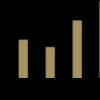
Overview
Entering a forex position is easy as pie; exiting is anything but. We should consider trading the markets as a transaction of carefully-planned stages where we account for every phase.
These can be grouped as planning, entry, trade management, and, last but not least, the exit. Of course, a successful trader spends a great deal of time mapping out each step to ensure they’re picking the most predictive trading opportunities.
One common problem with forex traders is focusing too much on entry techniques and strategies. Yet, what defines the outcome of any position is the exit, a series of which determine your long-term success over time.
Without a solidly defined exit strategy, you’re likely to make irrational decisions that can make you take more significant risks and hurt your bottom line.
It’s not whether the result is a profit or loss which matters but rather if your exit was part of your trading plan. Therefore, as with all the other stages, exiting should be intentional, logical, and never spur-of-the-moment.
So, how do you exit your positions correctly and in a way which maximizes your chances of being consistently profitable? Let’s find out.
Defining the types of exit strategies
The idea is pretty simple: you can only exit with a loss or profit in forex. Of course, it’s a lot more complicated than this premise since there is a multitude of techniques to achieve this objective.
One of the challenges traders have to deal with consistently is uncertainty. Even if we know you can only have a loss or profit, the extent of these two is much harder to predict due to the dynamic nature of trading.
However, the goal is to have as small a loss as possible after giving the market enough time to nullify your setup. Furthermore, you also want to take as much profit as possible in a profitable position just at the point you believe the market will eventually correct substantially.
Ultimately, a trader should have two exit strategies, one for losses and another for gains. Let’s explore both in the following sections.
Exit strategies for losses
The standard and most straightforward way to manage your losses is using a stop loss order. Another approach (not recommended, especially for beginners) is using ‘mental stops.’
1. Traditional stop
This approach requires the trader to define an invalidation point (e.g., a support/resistance area, a break of a trendline, the high/low of a candle, etc.), an area on the chart where they believe the setup has been proven wrong depending on their strategy.
Traders should always place a stop loss price BEFORE executing a position through the market or pending execution.
You never want to use one-click trading when opening a trade. Unfortunately, the stop loss can become a controversial topic to the point where some completely abandon it.
These misconceptions are primarily caused by not knowing how to set a stop loss appropriately. Here are some tips to help you in this regard:
- Traders shouldn’t use the same stop loss size on every position.
- You must never move a stop loss once in place, unless for locking profits or implementing a breakeven stop (if that’s what you’ve pre-planned).
- Setting a stop boils down to volatility context. A recommended tool is using the Average True Range (ATR), which can help you to find the right balance of ‘not too tight’ and ‘not too wide’ based on how volatile the market you’re trading is on the chosen time frame.
2. Mental stop
A mental stop is a somewhat contentious concept referring to traders not using a ‘hard stop’ but exiting a position through intuition. There are several problems with this method. No logical strategy exists with mental stops as it’s far too discretionary.
The biggest drawback is that you can lose a lot more than if you used a fixed stop loss, depending on the position sizing parameters. A mental stop could work with an experienced long-term trader using a large trading account and reasonable lot sizes. However, a fixed stop is just much better overall.
Exit strategies for profits
Now for the fun part, profit-taking! While every trader’s greatest desire is profits, maximizing your gains in a position is anything but easy.
The greatest challenge is exiting a profitable position prematurely (where price continues substantially in your favor afterward) or closing a trade with much less profit than if you exited earlier.
The primary factor to consider here is your inherent trading style, as the art of taking profits boils down to holding time. If you’re a scalper or day trader, you’ll stay in profitable positions for minutes to a few hours at the maximum.
Conversely, if you’re a swing or position trader, you can hold your trades for several days, months, or longer. Of course, each action comes with its pros and cons.
You can implement several exit strategies with varying degrees of success. However, you have to define your holding time as this mostly determines the extent of your profits.
Below is a list of popular methods for taking profits:
- Fixed risk to reward ratios
- Targeting a major support and resistance level
- Targeting a particular Fibonacci ratio
- Trailing stops
- Pattern projection
- Using a defined take-profit order
- Exiting during a high-impact news release
- Scaling out
- Using a time-based approach with no defined target
Traders use one of these or a combination to ensure they ‘squeeze the most juice’ out of a profitable position. Deciding on the most favorable profit-taking system is time-consuming but should be clearly defined and carried out consistently.
However, this part of trading can never be perfect as it’s impossible to predict the exact top or bottom in the markets without a substantial pullback.
Final word
As a forex trader, no entry should happen without an exit strategy in mind; it all boils down to thorough planning. Before you open a trade, you’ll have to consider a few possible scenarios in your head on what will likely happen.
Of course, the first potential event is some loss, the possibility traders need to expect. If the loss wasn’t above the monetary amount defined in your trading plan, you shouldn’t worry too much.
If you’re lucky, the market will probably be moving in your favor. Again, how you manage this part will have been clearly defined before initially taking the position. Ultimately, while anyone can click the buy or sell button, the responsibility of having consistently fruitful outcomes or exits is largely up to the trader.








Leave a Reply